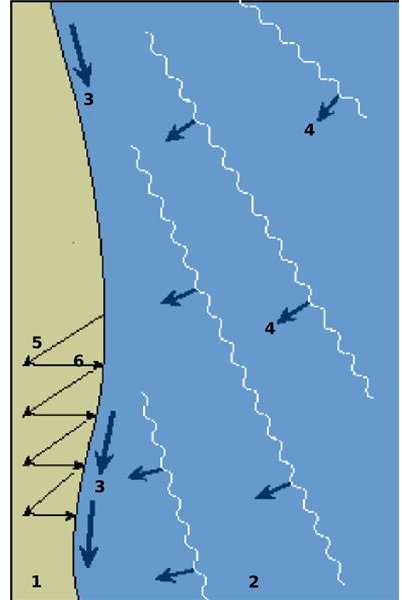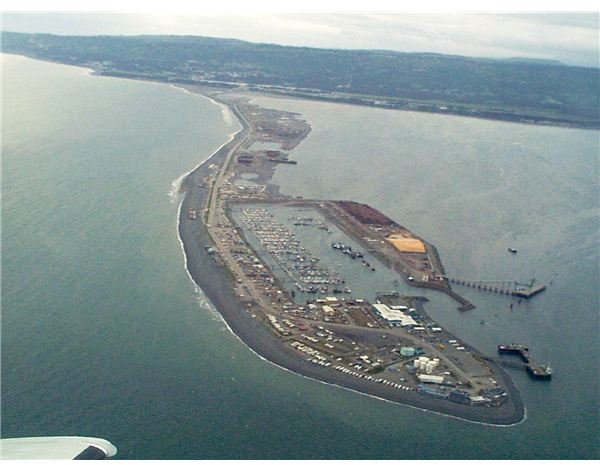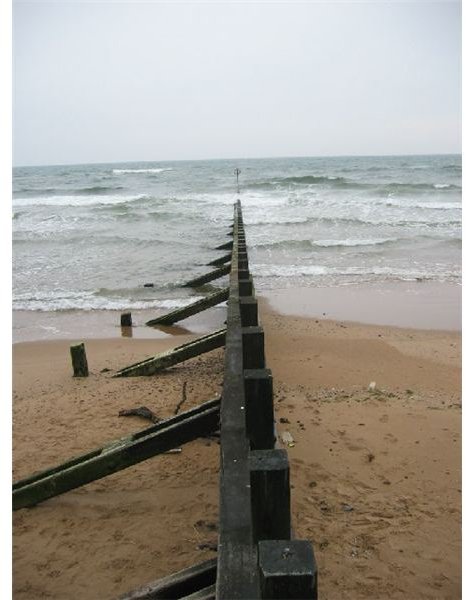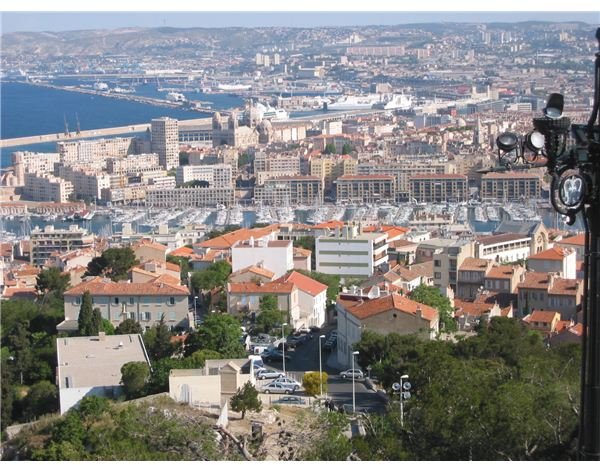Longshore Drift and How It Occurs
Definition of Longshore Drift
The process by which sediment such as sand and silt are transported to and from a coastline is known as longshore or littoral drift or longshore transport. The process takes places in the littoral zone, which is the part of the sea that is closest to the shore and in or around the surf zone (the region of breaking waves approaching the shore). Waves are chiefly responsible for the process and as a result, are vital in shaping the Earth’s coastlines.
How the Process Works

Longshore drift occurs as a result of wave action. Waves approaching the shore carry lots of energy. As these waves approach the beach, the base of the wave collides with the seabed. As a result, the waves topple and break apart.
In the process, they pick up sediment The sea bed determines what size particles will be picked up by the waves. Particle size is also determined by the force of the wave and how powerful it is. Once the wave approaches the shore, sediment is carried up the shore in angles by the waves. This is known as swash.
The wave then recedes back down the beach at an angle perpendicular (90 degrees) to the shore. This is known as backwash and as the wave backwashes, it carries sediment back down. Backwash occurs due to gravity and the resulting waves follow a different path down the beach as compared to when on their way up.
The entire process occurs in a somewhat zig-zag pattern. Material transported down the shoreline is carried by weak currents, known as longshore currents, that are produced as a result of the breaking waves.
The direction of the waves is dependent on the prevailing winds. The winds determine what path the waves will take and how the material will be swashed as well as back washed along the shore.
For example, if the winds are traveling in a north-west direction, then the waves will follow the same path picking up the sediment from the north-west and transporting it down the shoreline. Littoral drift is responsible for the formation of many natural features such as spits, barriers and tidal inlets. Let us briefly look at how these features are formed as a result.
Formation of Spits, Barriers and Tidal Inlets

Spits are formed as a result of littoral drifts traveling past the entrant point of a body of water, such as a river’s mouth or river’s entrant. Spits have two important features. On one end, the spit is attached to the land while the other end that is out into the sea resembles a hook shape due to varying wave directions.
Barriers are formed in a similar fashion to spits with one end reaching the land and the other out into the sea. Sometimes, a barrier/spit system exists simultaneously; this is known to be common in some parts of the world.
Tidal inlets are natural features that form due to the littoral drift process accumulating sediment in flood and ebb shoals. Tidal inlets function as natural sinks and as sources for large amounts of material. Arcachon Lagoon is one such system in France, which acts as a source for sediments transported by the longshore process.
Effects on Humans

Although this natural process is responsible for shaping the Earth’s natural coastal landscape, humans are somewhat troubled by the process. Millions of people live along the coasts and have homes that are built right on or near the beaches. As this process carries sediments away from the shore, the sand gets depleted or eroded from the region, which can make the homes look unappealing.
In addition, the travel industry is greatly reliant on pristine beaches to attract tourists so it is not a big fan of this natural cycle. As a result, steps have been taken to deter the process by building artificial structures such as groynes and artificial headlands for shore protection.
Impact of Human Intervention

The greatest threat to the natural cycle of longhshore drift comes from the building of ports and harbors because these result in an alteration of sedimentation patterns. This means that sediments quickly either erode from the coastline or get accreted in vast numbers in another region.
This affects the natural cycle and can and has led to the loss of lagoons, estuaries and the natural habitat that survives within it. We should try and make every effort to curb this from happening and protect the marine environment for the benefit of humans as well as the plethora of species surviving in these environments.
Credits
1. Authors unknown, “Longshore Drift,” BBC, https://www.bbc.co.uk/schools/gcsebitesize/audio/geography/pdf/longshore_drift.pdf
2. Author unknown, “Longshore Drift,” The Geography Site, https://www.geography-site.co.uk/pages/physical/coastal/longshore.html
3. https://geographyfieldwork.com/LongshoreDrift.htm
4. Author unknown, “Understanding Longshore Drift,” College of Charleston, https://spinner.cofc.edu/CGOInquiry/longshoredrift.htm?referrer=webcluster&
Image Credits:
Longshore Drift in action by Attribution: Simon Huguet under CC BY-SA 2.0
Longshore by USGS/USGov,moldified by Eurico Zimbres under Public Domain
USACE Homer Spit Alaska by U.S. Army Corp of Engineers, photographer unknown, under Public Domain
GroyneAberdeen by Lizzie under CC BY-SA 2.0
/Marseille-ports by Jddmano under CC BY-SA 3.0
